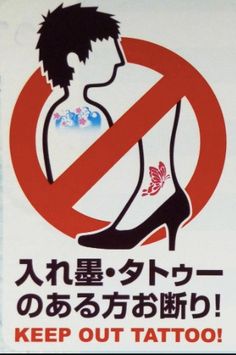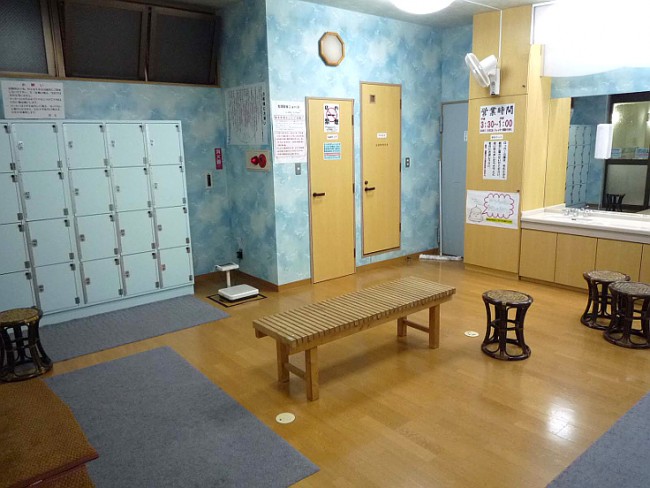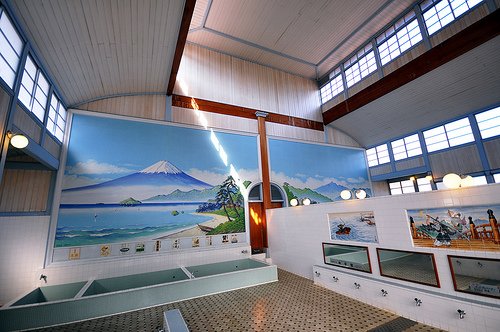Public Bathing at a Japanese Onsen
Some readers may already ask themselves right now, what’s an Onsen anyway? When you are organizing your trip to Japan, many people will probably recommend you to experience one of the most traditional activities in the Japanese archipelago: public bathing.
Onsen and Sento. . . What’s the Difference?
With bathing I do not refer to your run-of-the-mill bath or shower, but a hot spring or local public bath where you can have a revitalizing shower and enjoy the hot waters after a hard day’s work. When the hot water of these springs has a natural original (geothermal), they are called Onsen, and when the water is heated by caldrons (or with firewood in the most traditional cases), they are called Sento. Depending on the city you visit, you will find more of one than one of the other as there will generally be more Sento in a metropolis while Onsen are mostly located in the touristic and rural areas. Some onsen are even clustered together around high quality natural thermal water sources.
Considering the mountainous landscape of Japan, such hot spring are abound and the Japanese enjoy the benefits of these waters containing unique salts and minerals. They also became centers of social exchange yet in modern times as people prefer taking a showers in the private of their own home places such as these ave started disappearing from Japan’s streets. Luckily, the most beautiful Onsen still survive due to the fact that they have become part of some kind of hotel.
Proper Onsen Ettiquette
Now that you are well-acquainted with the concept of public bathing In Japan, let us take a look at the proper etiquette when visiting an Onsen or Sento. Since they are very traditional places, there may not be any signage about what to do and what not to do, so it is best to be well-informed in advance of etiquette just to be safe.
Finding a public bathing facility is quite easy, just look out for the half length curtain with the specific sign or ゆ o ♨ meaning “hot water”.
Watch Out for Tattoos
The first thing you should be made aware of about Onsen etiquette is that some of these places are uncomfortable with admitting people that have any tattoos on their body, meaning that they may choose to reject you if your tattoo is too big enough or includes a topics which is considered a taboo in Japanese society.
Men’s and Women’s Baths
These Onsen bathing places are divided by gender and there are lockers in the lobby (zone named genkan) where you keep your footwear. In some Onsen with the aforementioned hotel setup, you will also be able to rent a private bathing area that you can share with anybody you like. Upon entering, you will see a high display where you will pay for using the Sento and can get whatever you forgot to take with you (you have to use a small towel to scrub your body instead of a sponge). Afterwards you go through another doorstep into the dressing room where you can leave your remaining clothing and belongings.
Shower First
It is really important to realize that you will be completely nude, although it is a habit to cover your genitals with the little towel, inside an Onsen so the experience may be a little bit challenging for some tourists. Once inside, the mandatory etiquette to first take a showers that may seem a bit low at first but it is actually used while being seated on a small stool. When entering the hot water springs, you are truly in shared place which means you should not bring the towel you scrubbed yourself with under the shower or have any remains of soap or shampoo on your body. In some Onsen, there is also a cold water spring where you can go to for a change of temperatures to ensure good cardiac and blood circulation.
Time for a Relaxing Sauna
Additionally, some Sento offer a wet and dry sauna to improve the comforting experience. Do remember to shower of any sweat on your body before you get back into the bath. Once you have left the bathing and springs area you can dry yourself up so you don’t wet or soak the dressing room floor, which is usually made of a material called tatami. Some establishments offer the use of massage sofas for a small fee, or have a variety of snacks and beverages lined up to enjoy before taking your leave.
With the right bathing etiquette in mind you are now all set to enjoy the uniqueness of experiencing the slowly disappearing practice of public bathing in Japan. Enjoy!

















